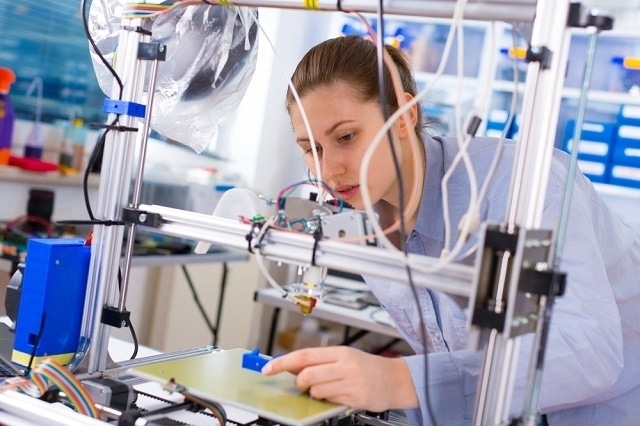Apr 4 2016
3D-printed figures are often produced with the aid of costly or customized 3D printers, using various materials such as; glass, sugars, thermoplastics, ceramics, and metals.
 Image Credit: Science Photo | Shutterstock.com
Image Credit: Science Photo | Shutterstock.com
A team of researchers led by Matthew Hartings, chemistry professor from American University, have shown for the first time that a commercial 3D printer can be used to build a chemically active structure. The team were able to develop a chemically 3D-printed structure with active chemistry, and with the capacity to mitigate pollution.
The research has been published online in the Science and Technology of Advanced Materials journal.
This experiment can be tried at home without any issues. The experiment was performed using several off-the-shelf materials frequently used by hobbyists, home enthusiasts, and makers. It places the power of chemical invention into the hands of people who are actively benefiting from 3D printing revolution.
The structure created by the team was the size of a handheld sponge, and plastic chemically active titanium dioxide (TiO2) nanoparticles were spread in it. With the aid of the filament used by hobbyists for processing 3D-printed figures, the team inserted the nanoparticles. The American University researchers were able to print a small, sponge-like plastic matrix using a 3D thermoplastic printer.
The team wondered whether the nanoparticles would stay active in the structure after being printed. Their other query was if the matrix was able to mitigate pollution. The answer to both queries was yes.
Pollutants tend to break down when natural light mixes with TiO2, which has potential applications in the removal of pollution from air, water, and agricultural sources. It was noticed that TiO2 photocatalyzed. Also, the degradation of a rhodamine 6G was photocatalyzed by TiO2.
It's not just pollution, but there are all sorts of other chemical processes that people may be interested in. There are a variety of nanoparticles one could add to a polymer to print.
Matthew Hartings, Professor of Chemistry, American University
Hartings stated that the concentration of nanoparticles had to be 10% less than that of the total structure mass. He found that this property limits the printing ability of the structure. For an efficient structure, a higher concentration of nanoparticles could be required.
As the researchers only used simple shapes for this study, they intend to harness the power of 3D-printing to print various exotic shapes. This will help them to analyze the impact of a printed structure on chemical reactivity.
Since the researchers have obtained significant results, they have started experimenting with other printed geometries. This will help them to discover an optimal printed shape, so that environmental pollutants can be removed using photocatalytic activity.